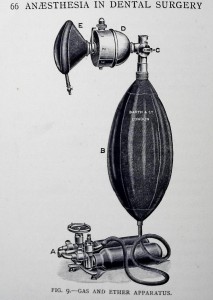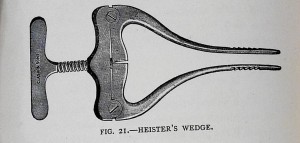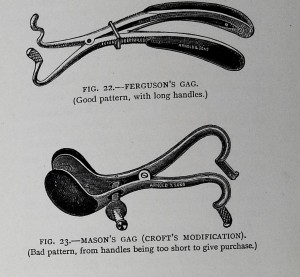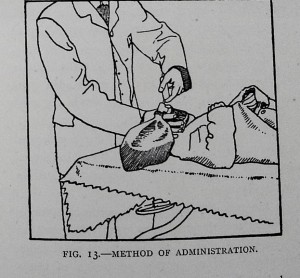This post is part of an ongoing series featuring items from the newly acquired Julio Mario Santo Domingo Collection.
Heister’s mouth-wedge was a popular tool used in dentistry in the late 19th and early 20th-century. The purpose of the tool was to keep the mouth wedged open in case a mouth-prop slipped, though one had to be careful not to break the teeth. As you can see the author was a big fan of the Ferguson gag because of its “good long handles” to provide plenty of leverage when opening the mouth. These illustrations come from Anaesthesia in dental surgery published in London in 1903.
According to the author, Thomas D. Luke, this was the first work of its kind that displayed the various types of anesthesia combinations used in operative dentistry. Luke gives brief descriptions of anesthesia usage, methods of application, as well as the advantages and disadvantages of equipment.
These two illustrations depict the administration of ethyl chloride. Apparently ethyl chloride in dentistry was quite new at this point in time and was a pretty good option, at least as good as nitrous oxide according to the author. The volume was almost complete when ethyl chloride really came onto the dentistry scene and Luke considered it to be such an excellent and valuable option that he revised the text to include it. It is still used today as a local anesthetic and a potent inhalation anesthetic.

Anaesthesia in dental surgery by Thomas D. Luke London : Rebman, Limited, 1903. RK510 .L95 1903 can be found at the Countway Library at the Harvard Medical School in Longwood.
Thanks to Alison Harris, Santo Domingo Project Manager, and Joan Thomas, Rare Book Cataloger at Countway for contributing this post.




